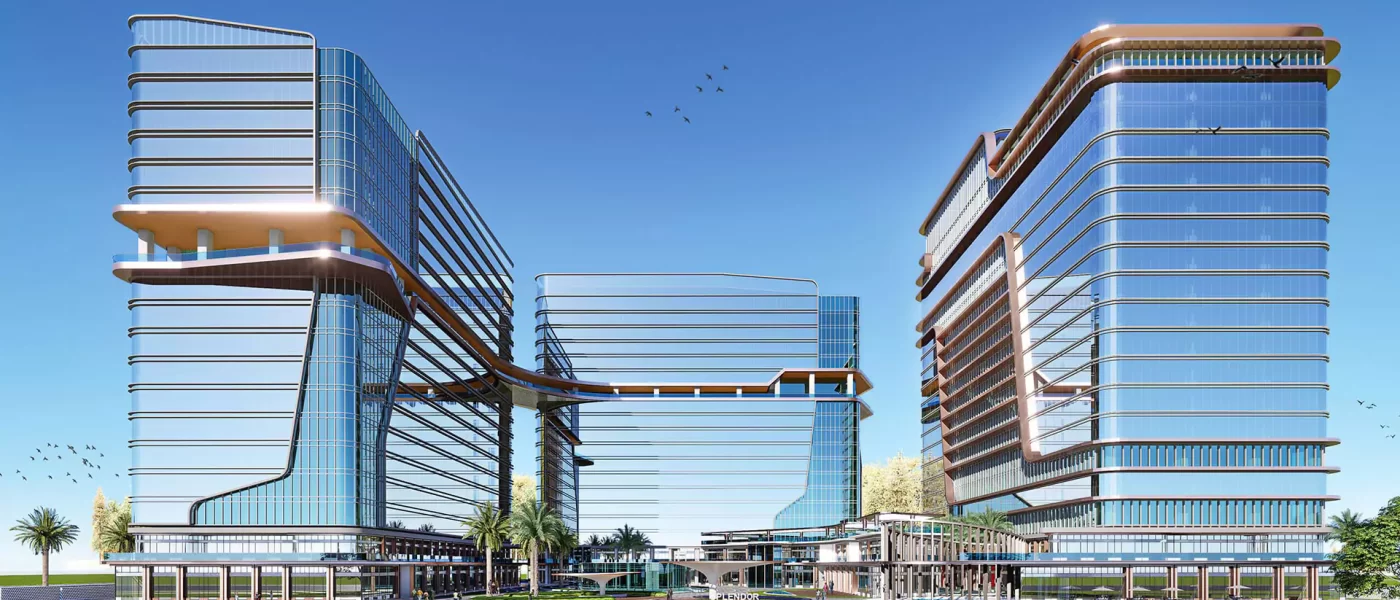In recent years, urban planners and developers have increasingly turned to mixed-use developments as a solution to create more vibrant, efficient, and sustainable cities. These developments, which combine commercial, cultural, and sometimes industrial uses into a single project, offer numerous benefits to residents, businesses, and the broader community. As urban areas continue to grow and evolve, understanding the advantages of mixed-use developments becomes crucial for shaping the future of our cities.
Enhanced Urban Vibrancy
One of the primary benefits of mixed-use developments is the creation of lively, dynamic neighborhoods. By integrating various functions within a single area, these projects foster a sense of community and encourage activity throughout the day. For instance, commercial projects in Noida like ONYX by Splendor demonstrate how the integration of office and retail spaces can create a bustling environment that serves multiple needs.
This vibrancy is not just about having different types of spaces in close proximity; it’s about creating an ecosystem where these spaces interact and complement each other. Restaurants and cafes cater to office workers during lunch hours and transform into evening hangouts for residents. Retail shops benefit from the foot traffic generated by both the working population and local residents. This constant flow of activity creates a pulsating urban environment that feels alive and engaging at all hours.
Improved Accessibility and Reduced Commute Times
Mixed-use developments often reduce the need for long commutes by placing residences, workplaces, and amenities in close proximity. This is particularly evident in projects like ONYX Noida 142, where office spaces are complemented by retail and dining options, allowing employees to access essential services without traveling far from their workplace.
The reduced commute times not only improve the quality of life for individuals but also have broader societal benefits. Less time spent in traffic means reduced carbon emissions, less stress on public transportation systems, and more time for personal and family activities. This improved work-life balance can lead to increased productivity and overall satisfaction among the workforce.
Efficient Land Use
In urban areas where space is at a premium, mixed-use developments make efficient use of available land. By combining multiple functions vertically, these projects maximize the utility of each square foot. This approach is especially valuable in rapidly growing areas like Noida, where commercial space in Noida is in high demand.
Vertical integration allows developers to create high-density environments without sacrificing green spaces or community amenities. For example, a single building might house retail spaces on the ground floor, offices on the middle floors units on the upper floors, all while incorporating shared amenities like rooftop gardens or fitness centers.
Economic Benefits
Mixed-use developments can provide significant economic advantages. They often lead to increased foot traffic, which benefits retail businesses. Additionally, the diversity of uses can create a more stable economic environment, as the project doesn’t rely on a single type of tenant or market sector. Splendor projects in Noida have recognized this potential, incorporating retail spaces into their office developments to create thriving micro-economies.
These developments can also lead to increased property values in the surrounding areas. As mixed-use projects bring amenities and services to a neighborhood, they often make the entire area more desirable, benefiting both residential and commercial property owners.
Sustainable Urban Living
By reducing the need for car travel and promoting walkability, mixed-use developments contribute to more sustainable urban environments. They often incorporate green spaces and energy-efficient designs, further enhancing their environmental benefits. The ONYX 142 Noida project, for example, combines modern office spaces with green initiatives, showcasing how commercial projects in Noida can prioritize sustainability.
Many mixed-use developments are designed with sustainability in mind from the ground up. This can include features like:
- Rainwater harvesting systems
- Solar panels for energy generation
- Green roofs to reduce the urban heat island effect
- Electric vehicle charging stations
- Efficient waste management systems
These features not only reduce the environmental impact of the development but can also lead to cost savings for tenants and residents in the long run.
Enhanced Safety and Security
The constant activity in mixed-use areas can lead to improved safety and security. With people present at different times of the day due to varying use patterns, there’s natural surveillance that can deter crime and create a sense of security for residents and visitors alike.
This “eyes on the street” concept, popularized by urban theorist Jane Jacobs, suggests that the presence of people engaged in various activities throughout the day and night creates a self-policing environment. This can lead to reduced crime rates and a greater sense of community among residents and users of the space.
Flexibility and Adaptability
Mixed-use developments are often more adaptable to changing market conditions. If demand for one type of space decreases, the diversity of uses can help maintain the overall viability of the project. This flexibility is particularly valuable in dynamic real estate markets like Delhi NCR.
For example, if there’s a downturn in the office market, the retail components of a mixed-use development can help offset losses. Similarly, if consumer habits change and affect retail spaces, the presence of office and tenants can provide a stable base while the retail spaces are repurposed or reimagined.
Social Interaction and Community Building
Mixed-use developments create opportunities for increased social interaction and community building. By bringing together people with diverse backgrounds and needs in a shared space, these developments can foster a sense of community that is often lacking in more segregated urban environments.
Common areas, such as plazas, parks, or community centers within mixed-use developments, serve as gathering spaces where residents, workers, and visitors can interact. This can lead to a stronger sense of belonging and community identity, which is increasingly valuable in our often disconnected urban environments.
Support for Local Businesses
The diverse ecosystem created by mixed-use developments can be particularly beneficial for local businesses. The built-in customer base of residents and office workers provides a steady stream of potential clients for small businesses, restaurants, and service providers. This can help create a unique local economy and support entrepreneurship within the community.
Case Study: ONYX by Splendor
A prime example of successful mixed-use development is ONYX by Splendor, a commercial project in Noida. This development seamlessly integrates office spaces with retail areas, creating a synergistic environment that caters to the needs of businesses and their employees. The project demonstrates how thoughtful design can maximize the benefits of mixed-use development:
- Diverse Tenant Mix: By combining office and retail spaces, ONYX attracts a variety of tenants, from corporate entities to small businesses and service providers.
- Amenity-Rich Environment: Employees working in the office spaces benefit from on-site retail and dining options, enhancing their work experience and reducing the need to leave the premises for daily needs.
- Efficient Space Utilization: The vertical integration of different uses allows for maximum utilization of the available land, a crucial factor in the densely populated NCR region.
- Sustainable Design: The project incorporates green building practices, aligning with the growing demand for sustainable commercial space in Noida.
- Community Creation: By offering diverse spaces and services, ONYX fosters a sense of community among its occupants, contributing to a more engaged and satisfied tenant base.
Challenges and Considerations
While mixed-use developments offer numerous benefits, they also come with challenges. Developers and planners must carefully consider factors such as:
- Zoning regulations that may need to be updated to accommodate mixed-use projects
- Potential conflicts between different uses, such as noise from commercial areas affecting residential spaces
- Complex financing structures due to the diverse nature of the project
- The need for skilled management to handle the varied components of the development
Despite these challenges, the benefits of mixed-use developments often outweigh the drawbacks when projects are well-planned and executed.
Also Read: The Evolution of Noida into a Business Powerhouse
Conclusion
Mixed-use developments offer a compelling solution to many urban challenges, from land scarcity to sustainability concerns. Projects like ONYX by Splendor in Noida demonstrate how these developments can create vibrant, efficient, and desirable urban spaces. As cities continue to grow and evolve, mixed-use projects will likely play an increasingly important role in shaping the future of urban landscapes, offering benefits to developers, businesses, residents, and the broader community alike.
By fostering vibrant communities, promoting sustainability, and creating economic opportunities, mixed-use developments are not just changing the physical landscape of our cities – they’re reshaping the way we live, work, and interact in urban environments. As we look to the future of urban development, the principles embodied in successful mixed-use projects will undoubtedly play a crucial role in creating more livable, sustainable, and dynamic cities for generations to come.




